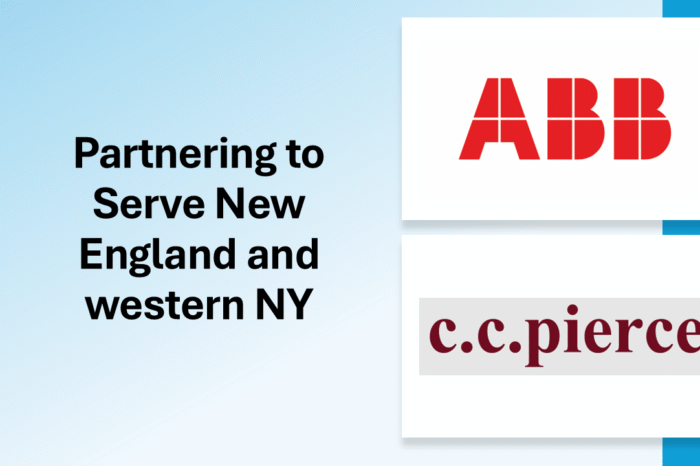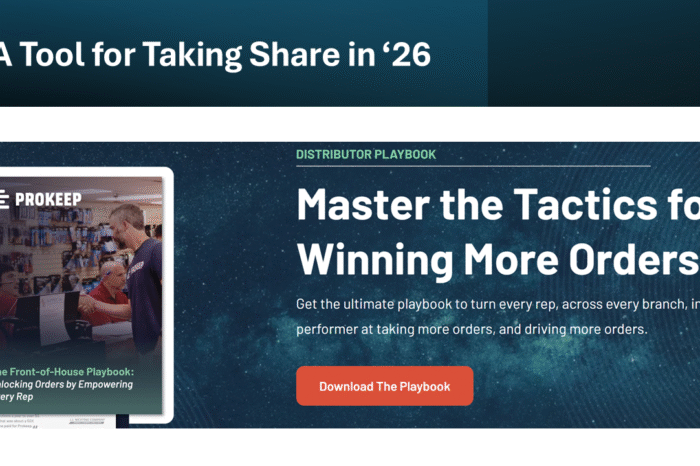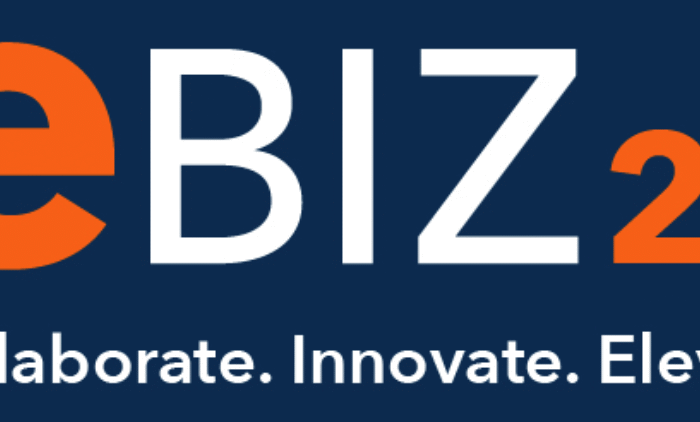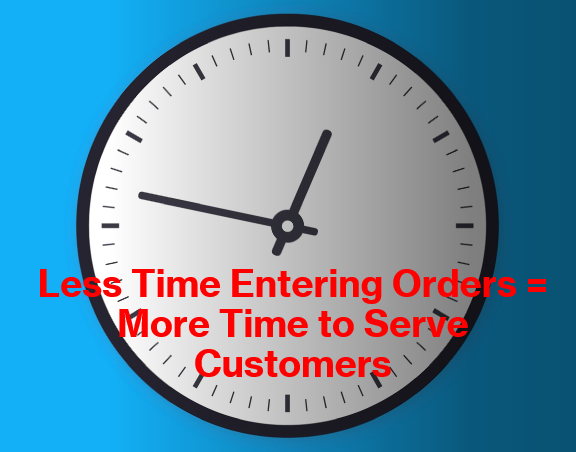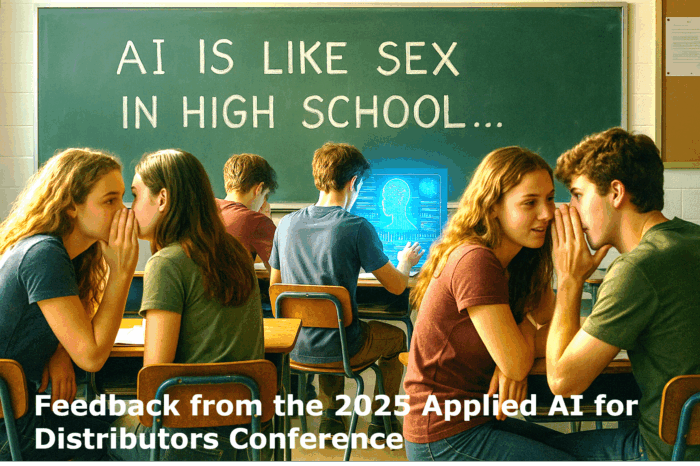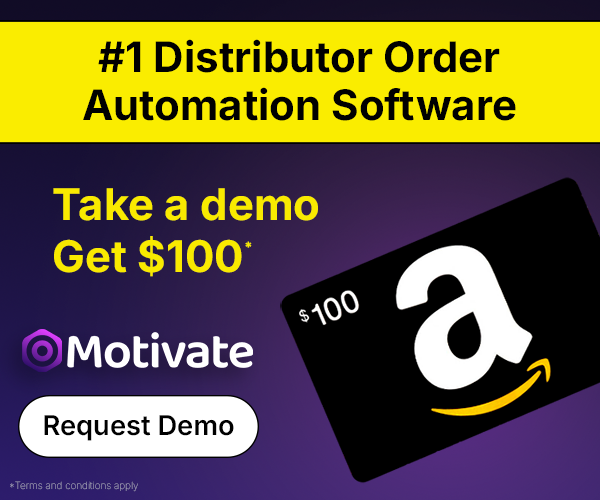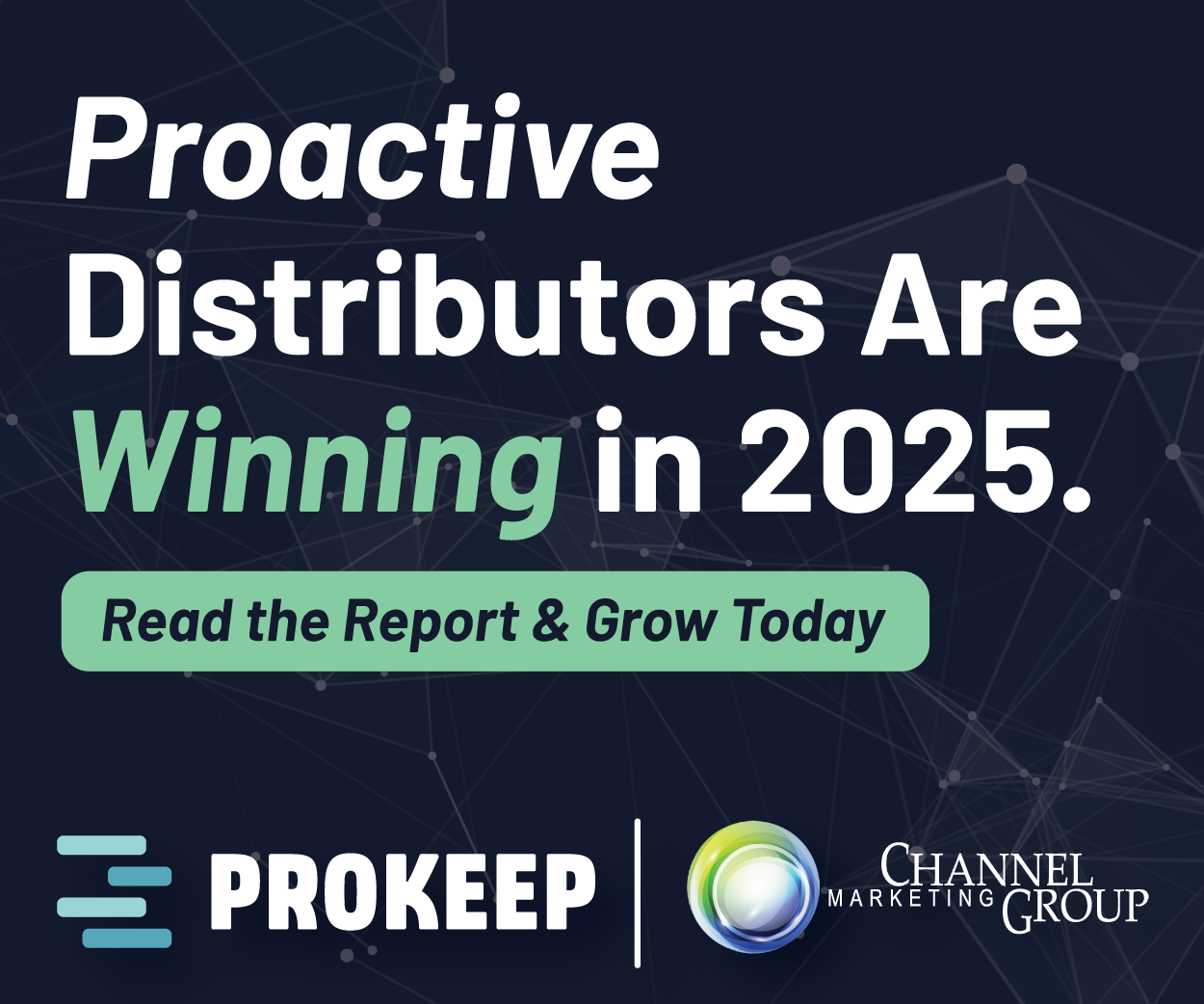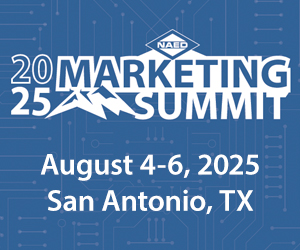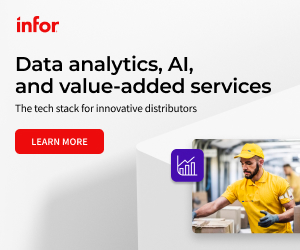Human-in-the-Loop AI Strategy
 If we’re to believe, AI is going to solve all our problems! It’s going to manage the sales organization, handle quoting, respond to customer service calls, make product recommendations, manage inventory, recommend and adjust pricing, analyze the business, simplify marketing, manage the robots that will pick and pack the orders and more (and since we have driverless cars, when is Elon going to have the driverless delivery truck? Utopia! As someone said on a podcast I was listening to recently, most people won’t have to work in 5 years (although we’ll have to figure out what to do to earn money!)
If we’re to believe, AI is going to solve all our problems! It’s going to manage the sales organization, handle quoting, respond to customer service calls, make product recommendations, manage inventory, recommend and adjust pricing, analyze the business, simplify marketing, manage the robots that will pick and pack the orders and more (and since we have driverless cars, when is Elon going to have the driverless delivery truck? Utopia! As someone said on a podcast I was listening to recently, most people won’t have to work in 5 years (although we’ll have to figure out what to do to earn money!)
Do I foresee it in my work “lifetime”? No. But the threat of this is concerning people. And this concern can inhibit the deployment of AI for the right reasons.
AI is not 100% infallible in all areas, today. As Ronald Reagan was known to say, “trust but verify” or, as college professors used to say, “don’t leave your brain in the classroom (or sometimes in your dorm room).”
This is where the concept of keeping a human-in-the-loop comes into play. It helps get adoption, facilitate implementation, and ensure that the deliverable meets the need.
Dmitry Kon, Chief Solutions Architect for Access Development Solutions, and I were recently discussing this topic as many manufacturers, reps and distributors are inquiring and “doing” is at various levels … and the technology is, quite frankly, moving too fast for some to operationalize. He shared his thoughts.
Human-in-the-loop AI and why it matters for distributors
“Distribution companies are intrigued by artificial intelligence, but most struggle with implementation approaches that either remove human expertise too quickly or fail to leverage AI capabilities effectively. The “human-in-the-loop” strategy offers a practical middle ground that minimizes risk while delivering immediate value.
This approach, sometimes called “augmented AI,” keeps humans in charge of critical decisions while delegating specific tasks to AI systems. It’s not about replacing workers with technology but rather enhancing human capabilities through automation and streamlining the bottlenecks.
Ashwin Rao, Chief AI Officer at QXO, during the recent MDM AI Summit, explicitly advocated for this method: “Today we should focus on what’s called augmented AI and not autonomous AI. So what augmented AI means, you’re augmenting a human with AI. This means a human should be in charge who delegates simple mundane tasks to AI for efficiencies.“
For distributors, this matters because AI implementations often fail when they attempt to automate complex processes without sufficient human oversight. A balanced approach lets distributors capture immediate efficiency gains while maintaining control over critical business decisions.
Augmented AI vs. Autonomous AI: A Framework for Implementation
Augmented AI keeps humans firmly in control of key processes while leveraging AI to handle specific tasks that can be delegated. The human remains responsible for critical decisions while the AI handles data processing, pattern recognition, and other supporting functions.
This measured approach contrasts with autonomous AI, where systems operate independently without human intervention. While autonomous AI represents a likely future state for many distribution operations, it remains premature for most applications in today’s distribution environment.
A gradual progression toward greater AI autonomy makes more practical sense. Build your AI systems so that you can gradually progress from augmented AI to autonomous AI in about five to 10 years, or sooner if AI is progressing fast and your company is comfortable with fuller adoption.
This progression allows distribution companies to develop confidence in AI capabilities through direct experience. By keeping humans involved with critical decisions, distributors can implement AI without jeopardizing customer relationships, inventory management, or other essential functions.
The three-phase implementation approach
-
Augmentation focus: Starting with simple delegation
The first phase focuses on identifying specific tasks that can be delegated to AI while maintaining human oversight. These initial implementations typically target repetitive, data-intensive processes where AI can enhance human capabilities.
Distribution companies can start with applications like:
- Simple product categorization and data cleansing
- Basic customer inquiry responses with human review
- Initial demand forecasting that informs but doesn’t automatically control inventory
- Data analysis that produces insights for human decision-makers
- Converting PDF and paper documentation into electronic format
These applications generate immediate value while providing a safe testing ground for AI capabilities.
-
Governance structure: Creating oversight mechanisms
As AI applications expand, establishing formal governance becomes essential. This phase focuses on creating clear policies, verification processes, and accountability systems.
“First off, from an AI perspective, the old cyber adage: trust but verify,” noted David McKee, Chief Technology and Information Security Officer at Turtle, during the MDM AI Summit. “You don’t give AI complete, absolute autonomy within your data set. You still have to have human oversight. There still has to be governance and guardrails.“
Johnny LeRoy, Senior VP and CTO at Grainger, reinforced this point: “Governance is super important. We’ve got a pretty robust governance process, particularly in picking which use cases and which tools and vendors and groups are there.“
-
Expertise evolution: Building team capabilities
The third phase focuses on developing internal capabilities to work effectively with AI systems. This includes technical skills and judgment abilities. Education extends beyond technical training to include critical thinking about AI outputs.
This expertise evolution includes training teams to effectively prompt and guide AI systems, developing verification skills to identify potential errors, and creating feedback loops where human input improves AI performance.
Real-World Examples from Distribution
Grainger, a leading industrial supply distributor, has developed a multi-layered governance approach that balances innovation with control. Rather than deploying chatbots directly to customers, they first focused on augmenting their own customer service representatives. This approach enhances human capabilities rather than replacing them, while gaining experience with the technology before expanding to direct customer interactions.
Allegis Corporation uses AI to analyze customer interaction data to understand correlations between customer engagement and revenue outcomes. They pull extensive data from their ERP system, examining touchpoints over time with specific customers, and correlating this with revenue performance.
Allegis incorporates verification as a core practice. After experiencing instances where AI-processed data differed significantly from expected results, the team established protocols requiring verification of AI outputs.
Their approach exemplifies efficient human-AI collaboration. Their team uses AI to process large datasets (sometimes 100,000+ data points) that would otherwise require days of manual analysis or expensive consulting engagements.
Practical implementation steps for distributors
-
Start with an AI assessment
Begin with a comprehensive assessment of your current capabilities and opportunities, including data quality, technology infrastructure, staff expertise, and security and governance requirements.
- Select initial use cases strategically
Distribution companies should select initial AI implementations that balance impact with manageable complexity. Good starting points include product data cleansing, basic demand forecasting with human oversight, and customer service agent augmentation.
-
Establish clear governance from the beginning
Even for initial implementations, establishing governance guidelines prevents issues as AI adoption expands. Define which processes can be fully automated versus requiring human review, create verification procedures, and set clear expectations for human responsibility.
-
Invest in employee education and training
Successful human-in-the-loop strategies require both technical implementation and human skill development. This education should emphasize that AI is designed to augment human capabilities rather than replace them, helping reduce resistance to adoption.
Building foundations now for long-term AI success
The human-in-the-loop approach provides distributors with a pragmatic AI implementation strategy that balances immediate benefits with long-term capability development. Distribution companies that successfully implement this strategy gain faster time-to-value, more reliable outcomes through appropriate human oversight, and better employee adoption.
By starting with targeted applications, maintaining appropriate governance, and gradually expanding capabilities, organizations of all sizes can realize tangible benefits while positioning themselves for leadership as AI becomes increasingly central to distribution operations.”
 Dmitry is the Chief Solutions Architect for Access Development Solutions. ADS helps manufacturers, distributors, reps and others with eCommerce and can support AI assessments. ADS is also a participant in our eCommerce4distributors initiative and a BigCommerce partner, helping companies on their digital maturity journey. BigCommerce has built AI capabilities within its platform to benefit distributors.
Dmitry is the Chief Solutions Architect for Access Development Solutions. ADS helps manufacturers, distributors, reps and others with eCommerce and can support AI assessments. ADS is also a participant in our eCommerce4distributors initiative and a BigCommerce partner, helping companies on their digital maturity journey. BigCommerce has built AI capabilities within its platform to benefit distributors.
Thoughts about Humans Being in the Loop
I was at the Industrial Supply Association conference last week. They had an AI seminar track, that was packed. But during a networking luncheon I asked three manufacturers about AI. All three, and different size companies, shared that their company has embraced AI with a number of initiatives and had widely deployed CoPilot. They talked about how it was a “first step” and they were “training” models to improve them but had already recognized significant productivity benefits and foresee more.
The point … companies are on the AI trail even though they may not be touting it publicly. Aside from feeling it is a competitive advantage; another reason was concern about cyber-security. So much, they shared, that the company has invested much into IT cyber tools and all three now say they are a “Microsoft-shop” for any software (with one company not allowing for Gmail emails to be opened!)
To Dmitry’s point, distribution companies are intrigued by AI. More progressive ones are converting “intrigue” into action. With research and pilto programs. Walking before running. Involving of humans helps the adoption and utilization process.
Remember, distribution is a relationship business, but sometimes that “relationship” is defined as “knowledge of the business” as well as “internal relationships.”
The key … do something. If you need a framework, reach out to Dmitry for ideas … and if you’d want us to pair with him to bring an industry perspective, we can arrange that also.


